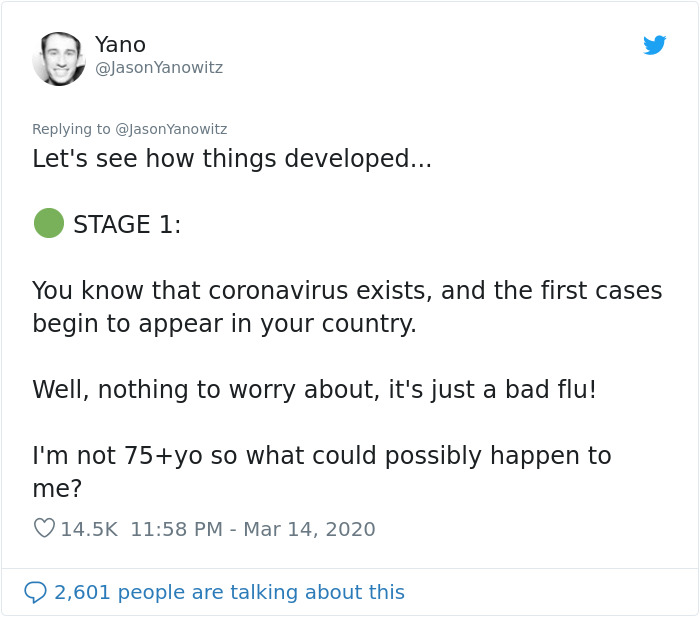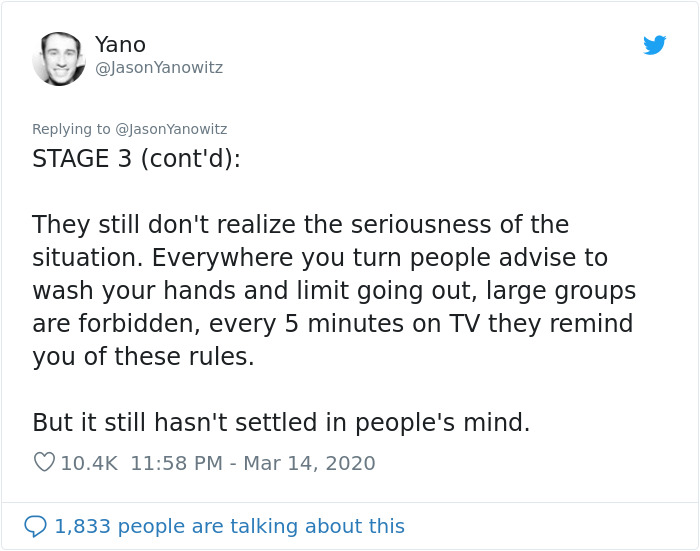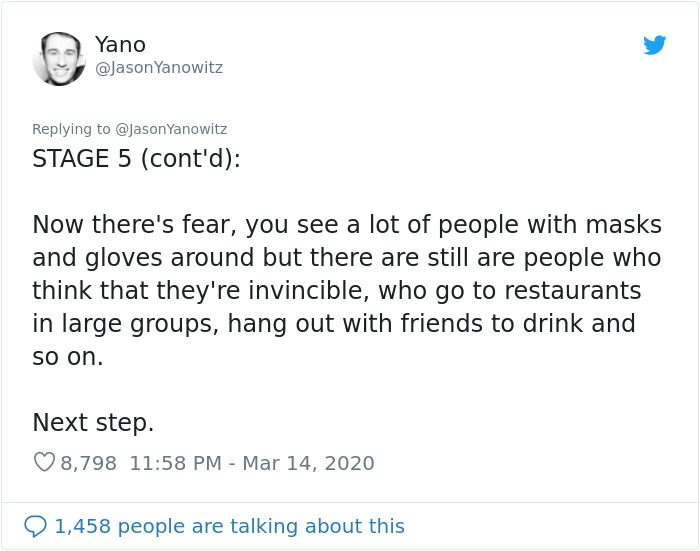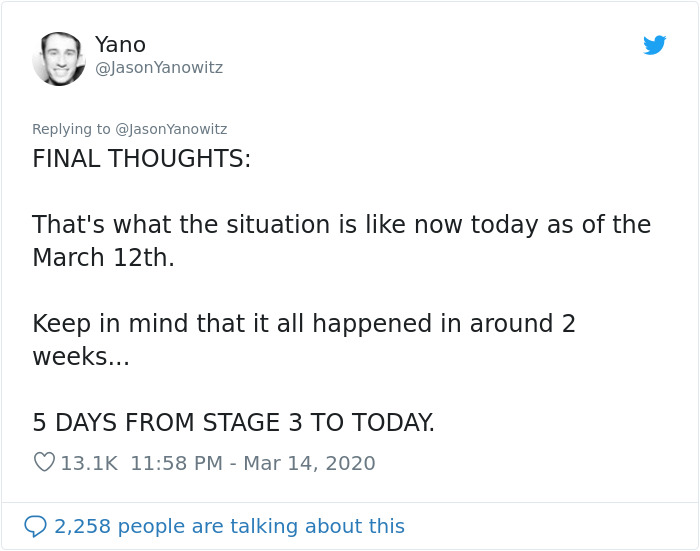This was posted by the state Friday - 143 people had tested negative and one positive. That was an increase of one positive and 84 negatives since the day before (I only know this because I had a screen shot from Thursday). And the day before was the total since January 1. So they had rapidly increased the testing - more than doubling the people tested.
So here's today's numbers:
They don't post these numbers over the weekend. All we know is that since the Friday post, they've tested another 107 people all of whom tested negative. Presumably this includes people tested Friday, Saturday, and Sunday.
In any case, the state is testing people at a much faster rate than they had been. Though I didn't look at that page before Wednesday when only 60 people had been tested. Since then 4 times that many have been tested.
The only positive person was reported to be a foreign national cargo pilot who went directly to his hotel and then called for medical help. He would have had contact with only a few people - other crew, customs, van or taxi driver, and the hotel check in desk. A group small enough to have been contacted and tested. But I'm only guessing at what should have happened.
Meanwhile I found out today that my email to the state public health department with my questions hadn't actually been sent Friday. So I've resent it and got a confirmation they received it.
Some obvious questions that arise now:
1. How many tests does Alaska have? I was told 500 by a couple of people Friday. No one could tell me if we got more. If not, we've used half of them.
2. Did more come? I'm guessing there are more tests or they are on the way, since the testing screening has loosened up since I got turned down on Wednesday.
3. Why test? One of my questions is about the objective of testing in Alaska. I couldn't find a stated objective on the website. It seems there are several overlapping goals:
1. treat the patient
2. protect health care providers
3. protect the general public
So did my doctor, on Friday, when they had ruled out flu and RSV,
- decide based on her assessment of me as not likely to have COVID-19, turn down my second request for a COVID-19 test? Or
- did she also consider the scarcity of tests and decide my taking a test would not be a good use of the tests? (At that time I did mention that something had changed because they had tested over 80 people the day before, more than all the tests since they began testing.) Or
- Was she considering the public health needs to test everyone who has any chance of having the virus to identify all carriers and then all the people they had been in contact with?
Clearly the last one was not a highly weighted part of her calculation. Since they were willing to test me for flu and RSV, I have to conclude the decision was made based on her assumption about the availability of tests. But the model from other places is to test as many as possible to identify carriers and then all their contacts.
Meanwhile, Anchorage is shutting down. Schools have been closed. University is only teaching classes electronically and the campus is pretty much closed. Public buildings like libraries and museums are closed. As of this afternoon, restaurants and bars are closed except for take-out and delivery. Groups of more than 50 people are not allowed. OLÉ classes I was signed up for at the end of March are cancelled. The Alaska Press Club Conference in April is postponed.
The only sporting event I'm aware of that has NOT been cancelled is the Iditarod race which began before people caught on. The newspaper had an article about the village of Shaktoolik not allowing the mushers into the village, but set a checkpoint and rest place outside the village.
What the article didn't include was mention of how the 1918/19 influenza wiped out - literally - many Native villages. In some there were only a few survivors. So their concern is not overblown. In fact the report I linked to above says:
"This DHSS analysis also predicts, based on 2016 population data, how many people would die in Alaska if a similar pandemic were to occur today. If we had a flu season with the same rate of death as the epidemic wave in the late fall of 1918, the estimated number of deaths would be 11,970 Alaskans."
For those who are still skeptical about the reactions to the virus - or have family and friends who are still scoffing - I offer you this message from Jason Yanowitz who identifies six stages of the epidemic in Italy. It was originally on Twitter, I'll just put up a few of the images as he walks through what people were thinking as things went quickly to terrible.

By Stage 3, 25% of Italy was under quarantine, but bars and restaurants were still open.

It's spread to the whole country.

Stage 6 has everything shut down and people need registration papers to be out on the streets. If you're out and positive, you can be charged with murder.

There are so many people who have no concept of math beyond the simplest parts. So graphs mean nothing to them. The idea of exponential growth means, if anything, 'big growth'. So maybe this Twitter thread can get people to understand that, NO, this is not big government ruining your lives, but big government doing what only it can do to save lives.
Here's the link again to the article that has all these Tweets.


No comments:
Post a Comment
Comments will be reviewed, not for content (except ads), but for style. Comments with personal insults, rambling tirades, and significant repetition will be deleted. Ads disguised as comments, unless closely related to the post and of value to readers (my call) will be deleted. Click here to learn to put links in your comment.